
Tree Pruning – Everything You Need to Know
Need help determining how, what, and when to prune your tree? Knowing when and what to prune off your tree will help it stay healthy, assume the shape you desire, and better resist severe wind and driving rain.
nannenarboretum.org answered some frequently asked questions and gathered the following tree pruning information and tips to guide you when shaping and encouraging your tree to grow strong and healthy.
Why is Tree Pruning Necessary?
Pruning your tree can remove disease, fungi, and other decay, preventing it from spreading to healthier branches or disrupting its hydraulics. Removing these branches can expose others to more sunlight and air circulation, helping reduce disease occurrences.
Pruning is also used to encourage strong structure development and reduce the potential for damage during severe weather.
Tip: Removing broken or damaged branches encourages wound closure.
How Often Should Trees be Pruned?
Newly planted (young) trees should be inspected and trimmed every 1 to 5 years. Mature trees should have an annual inspection with a 5 to 10-year trimming and pruning cycle, and fruit trees may require annual pruning.
Tip: Hire a qualified arborist to inspect, trim, and prune your trees.
When Should Trees be Pruned?
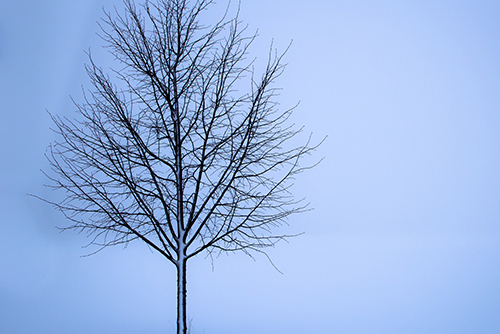
Seasonal tree pruning
Late winter (when the tree is dormant), from mid-February through early March, is the appropriate time to prune most trees. Unlike in early winter, pruning wound closure will occur faster if pruning activities occur closer to when new growth emerges.
What is the Difference Between Trimming and Pruning?
Pruning refers to removing dead or diseased wood, thinning out stems and branches, and improving the health and appearance of a tree. Trimming refers to cutting back branches and limbs for other concerns (not health-related). There are various pruning techniques, but before doing any pruning or trimming be clear on your goal and overall intention.
Note: “Pruning” and “trimming” are often used interchangeably.
Tree Pruning – Height Reduction
Reducing tree height requires precision pruning. Irreparable structural damage may occur if performed improperly.
Tip: Avoid “topping” the tree. Topping or cutting across the top and through the main trunk will lead to the tree’s decline and eventual death. When a tree’s height is problematic, consider removing or relocating it.
Tree Pruning – Cleaning the Crown
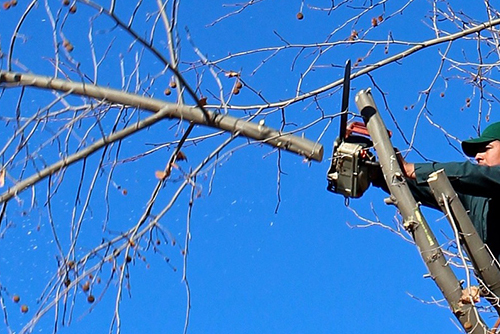
Crown thinning is essential to tree health
Cleaning the crown is removing crossed, dead, or dying branches, leaving a healthier and longer-lasting tree.
Crown cleaning removes unnecessary weight, stops decay, and reduces sudden falling branch potential.
Tree Pruning – Thinning the Crown
Crown thinning is selective and careful crown branch removal. This provides significant relief to trees continuously sustaining severe winds or carrying tremendous snow and ice weight.
Note: Extensive crown thinning should only be performed over several years. Removing more than 25% of the crown at once may fatally cripple the tree.
Tree Pruning – Raising the Crown
Crown raising is pruning or removing the lowest branches on a tree. Raising the crown is generally performed to provide pedestrian or vehicle clearance or to improve roadway and sidewalk lines of sight.
Tree Pruning – Storm Damage
After severe weather events, you should thoroughly inspect your trees and prune any damaged branches. Leaving damaged limbs may result in disease or insect infestation.
Pruning Tree Branches
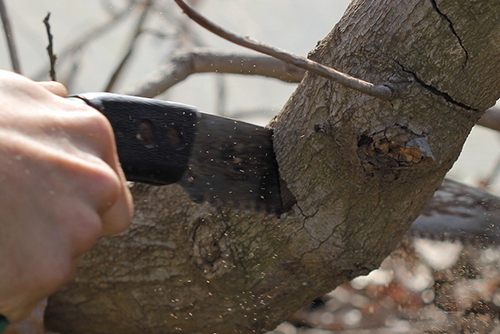
Pruning removes diseased and dead wood
Properly pruning branches allows a tree to quickly compartmentalize (seal and isolate) the wound, significantly reducing rot, disease, or infestation risks. Use the following steps to safely prune tree branches:
Step 1 – Identify branches you intend to prune. If pruning several branches from a tree or multiple branches from several trees, mark them with a ribbon or fluorescent spray paint before you begin.
Step 2 – Prepare a solution of 70% water and 30% alcohol or bleach. Use it to sanitize the equipment, tools, and protective gear/clothes you will use when pruning trees.
Note: Prevent spreading disease amongst your trees by sanitizing your equipment, tools, and gear before starting work on your first tree. Sanitize them again before moving on to the subsequent tree.
Tip: Transfer your sanitizing solution to a spray bottle and spray your equipment.
Step 3 – Following a 3-cut method will help prevent bark stripping when pruning medium and large-sized branches. Here’s how to do it:
Cut #1: A relief cut or undercut should be 6 to 8 inches from the trunk on the branch’s underside. This cut should be through 1/4 of the branch and is a stopping point if the bark tears or “strips” as the cut branch falls.
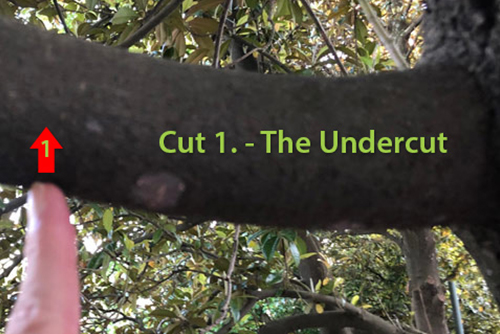
A relief cut prevents bark damage
Cut #2: This should be 6 inches from cut #1. This is a top-down cut and completely severs the branch from the tree.
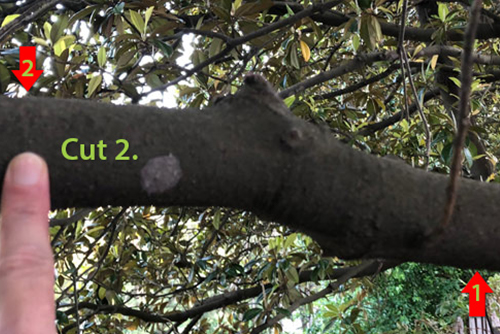
This cut severs the branch
Cut #3: This final cut should be flush with the branch collar, removing the remainder of the branch. For proper compartmentalization (sealing), avoid damaging the branch collar.
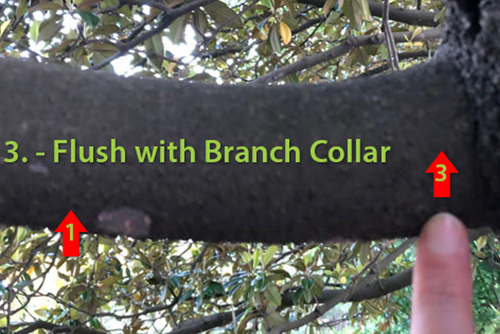
This cut trims the wound
What Happens if You Don’t Prune a Tree?
A tree will not die from a lack of pruning. However, neglecting a tree’s structure can impact its long-term health and growth and result in severe structural defects. These structural defects can end up causing sudden branch fall (self-pruning) or the tree’s collapse.
Tree Pruning
In this article, you discovered answers to frequently asked questions, crucial information on why you should prune a tree, and a pruning technique that minimizes tree damage when pruning.
Understanding why you should prune a tree and how it can be safely done will shape it and help it flourish without the extra weight.
By improperly pruning your tree, you risk causing severe structural damage, transmitting lethal pathogens, or cutting away too much for it to recover, effectively killing the tree.
Sources:
https://www.arborday.org/trees/tips/
content.ces.ncsu.edu/general-pruning-techniques
extension.purdue.edu/extmedia/fnr/fnr-506-w.pdf